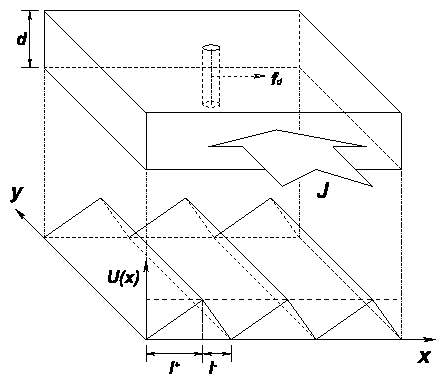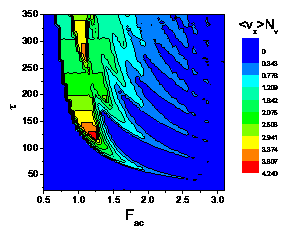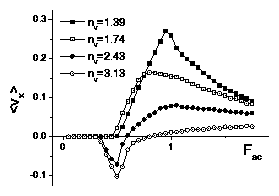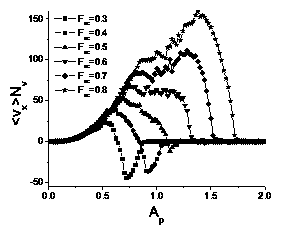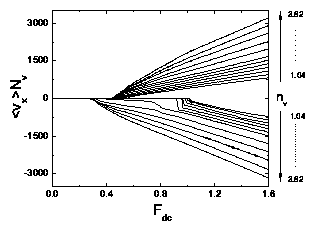 Figure 2:
The dc non-normalized average velocity
〈Vx〉Nv vs Fdc for varied
nv and both directions of dc drive.
The curves for Fiext=∧xFdc
have 〈Vx〉Nv ≥ 0, while the curves for
Fiext=−∧xFdc
have 〈Vx〉Nv ≤ 0.
In order of increasing |〈Vx〉Nv|, the curves
have
nv=1.04/λ2, 1.22/λ2, 1.39/λ2, 1.56/λ2,
1.74/λ2, 1.91/λ2, 2.08/λ2,
2.43/λ2, 2.78/λ2, 3.13/λ2,
3.47/λ2, and 3.82/λ2.
For
nv < 2.08/λ2, the negative drive critical depinning force
is larger than the positive drive critical depinning force,
fc− > fc+, but for
nv ≥ 2.08/λ2, this reverses and
fc− < fc+.
Figure 2:
The dc non-normalized average velocity
〈Vx〉Nv vs Fdc for varied
nv and both directions of dc drive.
The curves for Fiext=∧xFdc
have 〈Vx〉Nv ≥ 0, while the curves for
Fiext=−∧xFdc
have 〈Vx〉Nv ≤ 0.
In order of increasing |〈Vx〉Nv|, the curves
have
nv=1.04/λ2, 1.22/λ2, 1.39/λ2, 1.56/λ2,
1.74/λ2, 1.91/λ2, 2.08/λ2,
2.43/λ2, 2.78/λ2, 3.13/λ2,
3.47/λ2, and 3.82/λ2.
For
nv < 2.08/λ2, the negative drive critical depinning force
is larger than the positive drive critical depinning force,
fc− > fc+, but for
nv ≥ 2.08/λ2, this reverses and
fc− < fc+.
|
